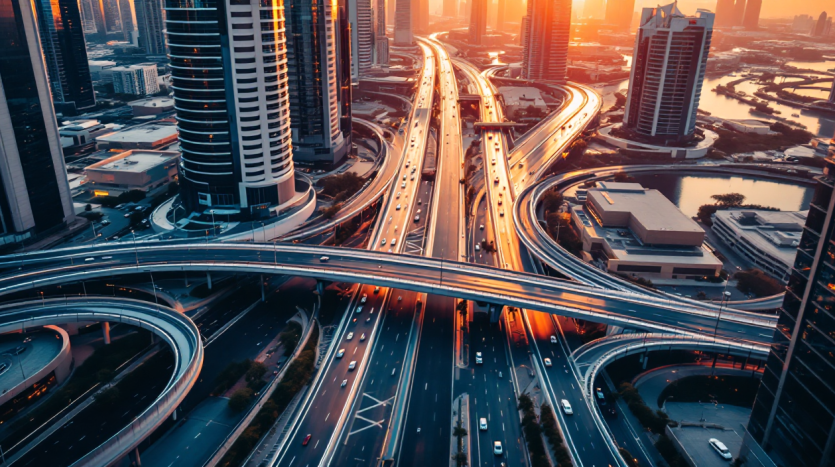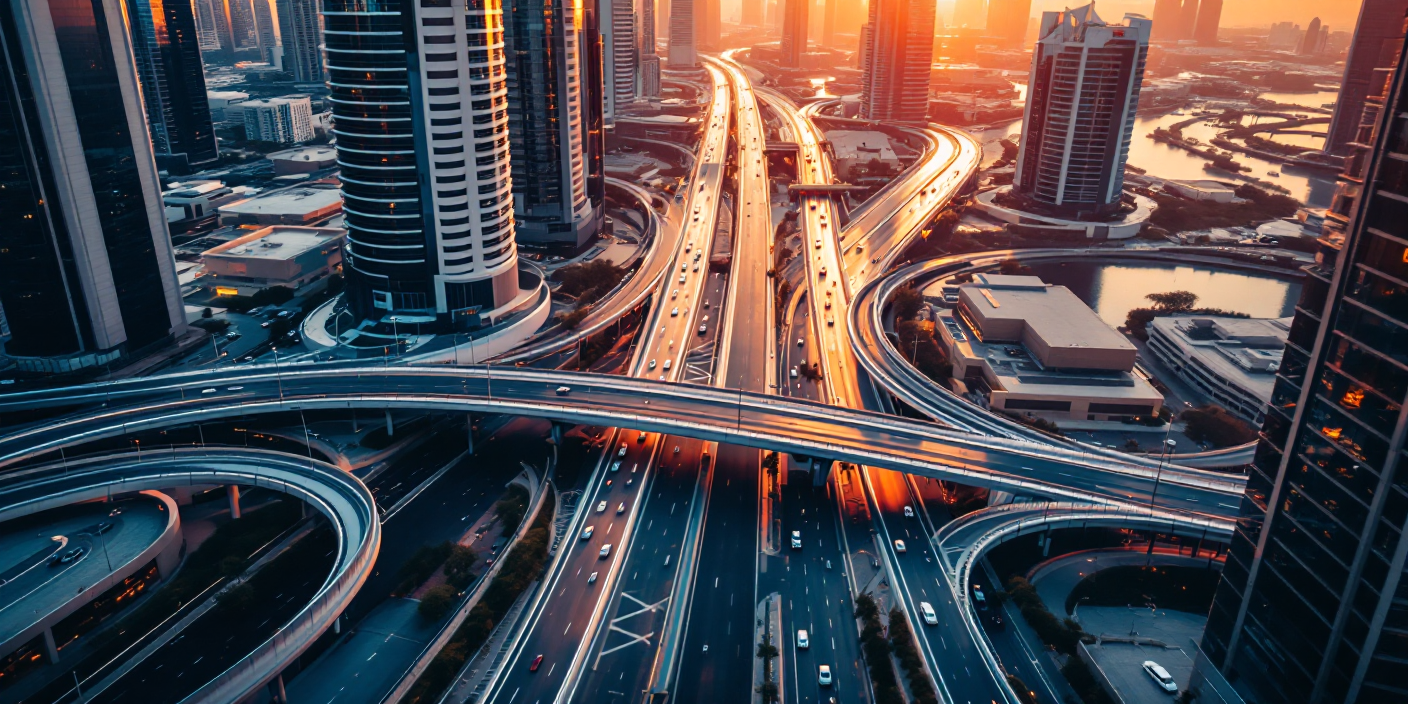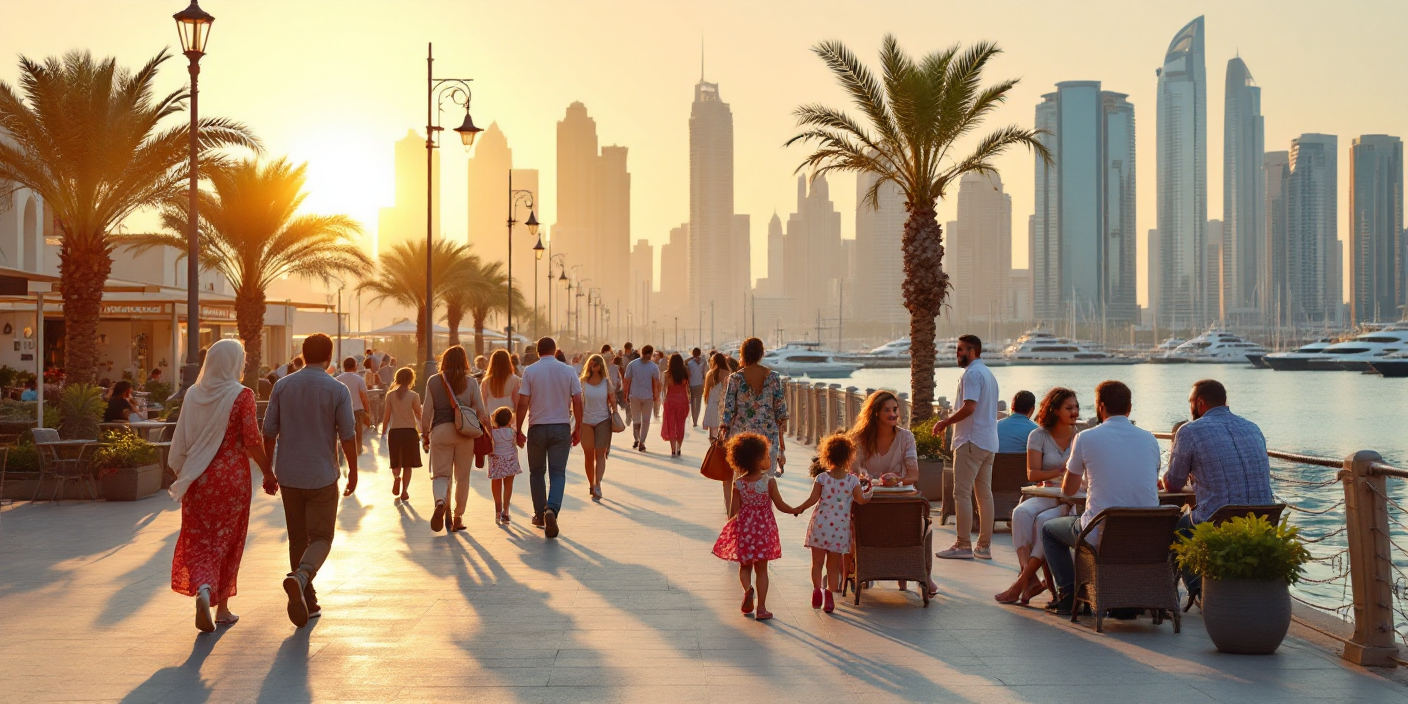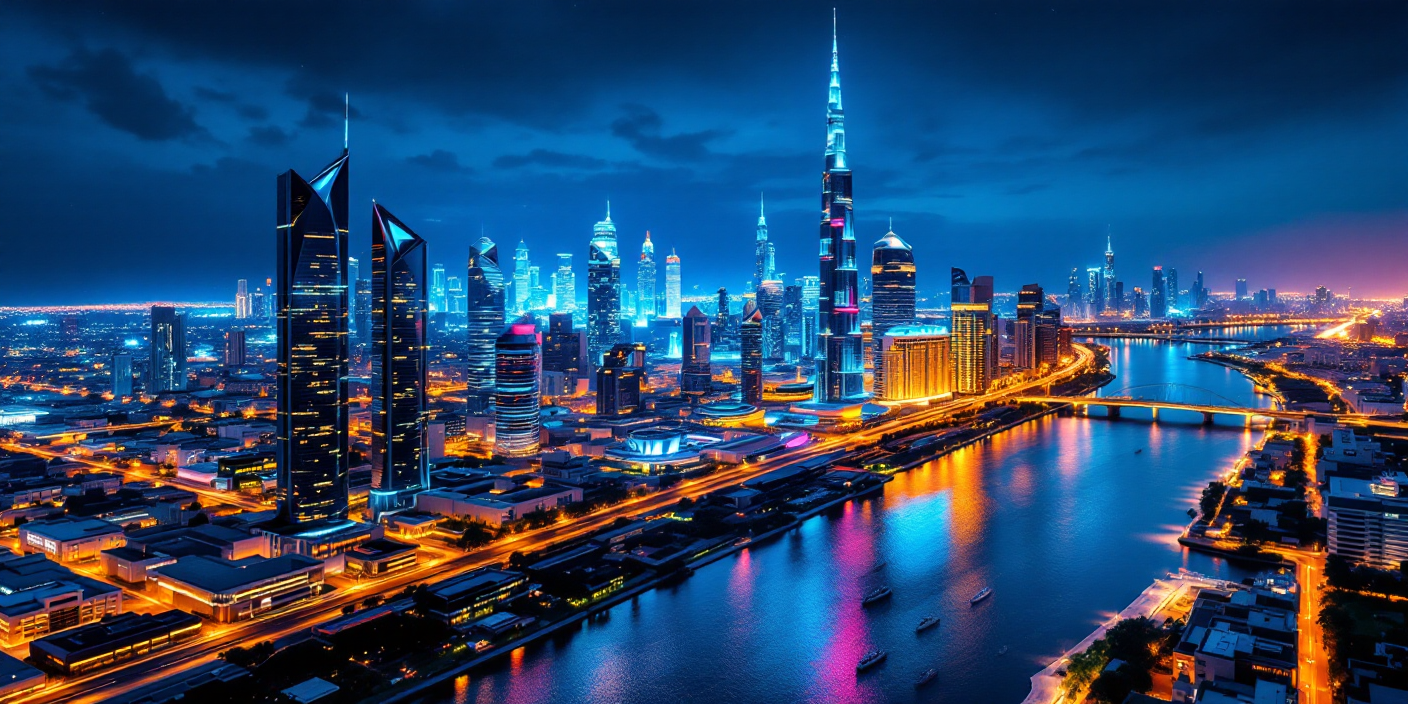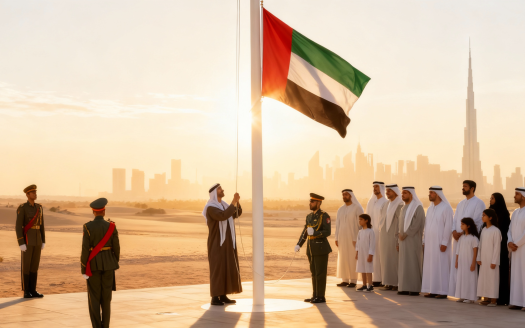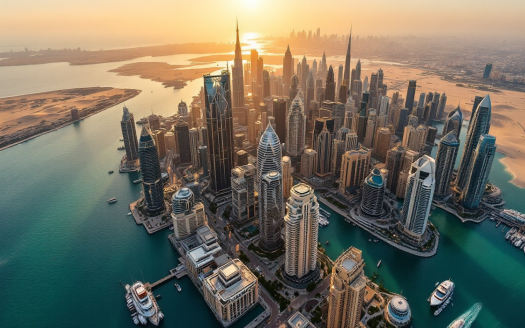
Dubai From Above: Where Infrastructure, Lifestyle & Investment Meet
Hovering above Dubai at dusk, the city reveals itself as more than a skyline — it’s a system.
The grid of highways, the geometry of towers, the measured distance between sea and sand — every element is deliberate. Dubai’s beauty isn’t accidental; it’s engineered.
A City Built on Intention
In Dubai, ambition doesn’t arrive in sudden bursts — it unfolds through planning. Every bridge, boulevard, and boulevard link begins on paper, part of a strategy that treats infrastructure as the foundation of quality living.
Unlike many global cities that retrofit their growth, Dubai builds in sequence: roads before residences, utilities before towers. Its master plans anticipate expansion rather than react to it, ensuring the city’s rapid evolution remains both efficient and sustainable.
Infrastructure as an Art Form
Dubai’s infrastructure is a study in precision.
From air-conditioned metro stations to smart traffic systems, from 14-lane highways to AI-managed utility grids, everything operates on consistency and foresight.
The emirate’s public transit system — the Metro, Tram, and RTA bus network — connects key business and residential zones with punctuality that rivals global benchmarks.
Data infrastructure mirrors that same efficiency. With new data centres and clean-energy corridors under development, Dubai continues to expand both its digital and physical reach.
Every layer works with intent: power, telecom, transport, and water systems function like aligned circuits under the city’s architecture. The result is performance that feels effortless — infrastructure as invisible luxury.
Designing a Seamless Life
Infrastructure in Dubai isn’t limited to roads and networks — it extends into education, healthcare, and urban services.
Schools meet international standards, healthcare systems integrate AI and telemedicine, and government portals handle documentation in minutes, not days.
It’s a city where structure becomes experience. A driverless metro, shaded pedestrian corridors, and clean energy supply chains converge to form a model of modern efficiency.
Luxury, in this sense, is not defined by exclusivity but by accessibility — by how seamlessly systems serve everyone.
A Home for Everyone
What distinguishes Dubai is parity. The same safety, healthcare, and access that define luxury communities extend across the city.
From Emirati families in Jumeirah to residents in newer suburbs, the quality of life remains constant.
More than 200 nationalities call Dubai home — drawn by the same balance of safety, opportunity, and lifestyle. Whether you stay a week or a decade, the city operates for you the same way: clean, safe, connected, and reliable.
That shared experience transforms Dubai from a transient destination into a long-term home — a place where belonging is built, not borrowed.
The Logic of Investment
For investors, Dubai’s allure goes beyond aesthetics. It’s structure that drives confidence.
A clear regulatory framework, transparent land registration, and digital transaction systems have positioned Dubai as the Gulf’s most trusted real estate hub.
The market continues to outperform regional peers: AED 114 billion in real estate transactions were recorded in the first quarter of 2025, underscoring strong end-user and investor activity.
High rental yields, consistent appreciation, and a stable currency pegged to the US dollar further reinforce Dubai’s resilience.
As reported by Arabian Business, Dubai is also the global leader in branded residences, with more than 140 projects expected by 2031 — proof of sustained demand for lifestyle-based property investments.
For global capital, Dubai offers not just returns, but reliability: the confidence that comes from a city built on governance, design, and data.
The Future, in Motion
The next phase of Dubai’s plan is already under construction.
From AI-driven smart districts to solar energy initiatives under the Dubai Clean Energy Strategy 2050, sustainability and innovation are shaping the city’s next chapter.
As the Khaleej Times recently noted, Dubai’s infrastructure investments are aligning with its long-term sustainability targets — reinforcing its position as one of the most future-ready cities in the world.
This balance between urban growth and environmental stewardship is not rhetoric; it’s roadmap.
Dubai continues to design what other cities debate: a future that works as well as it looks.
Closing
From blueprint to skyline, from systems to streets, Dubai operates on precision.
It’s a city that proves progress doesn’t need to be loud — it can be measured, engineered, and lived.
And that is its quiet genius: a place that builds the future not as an idea, but as infrastructure already in use.

